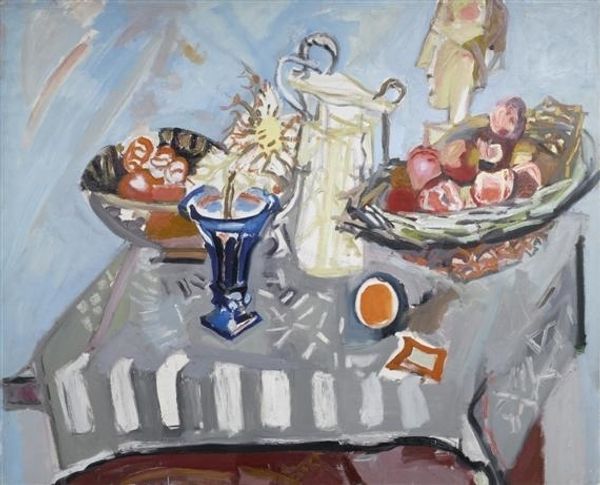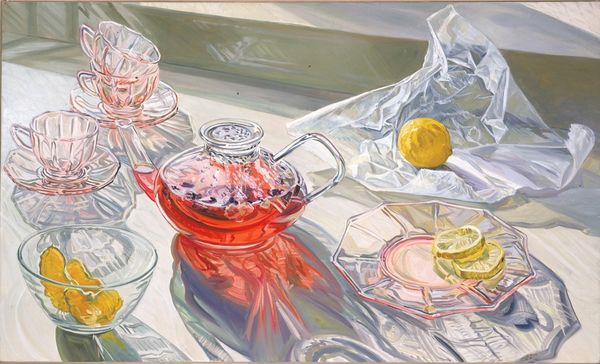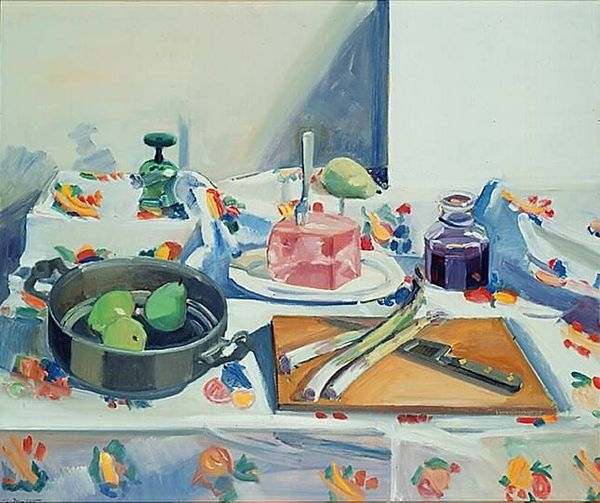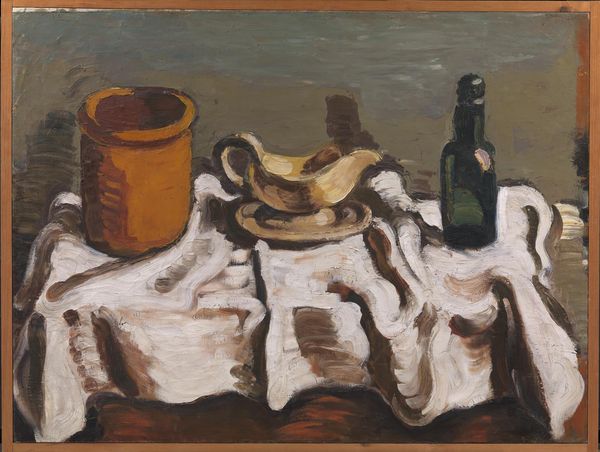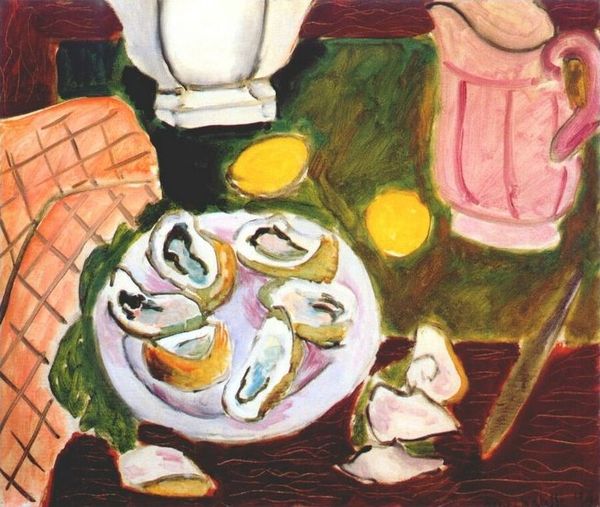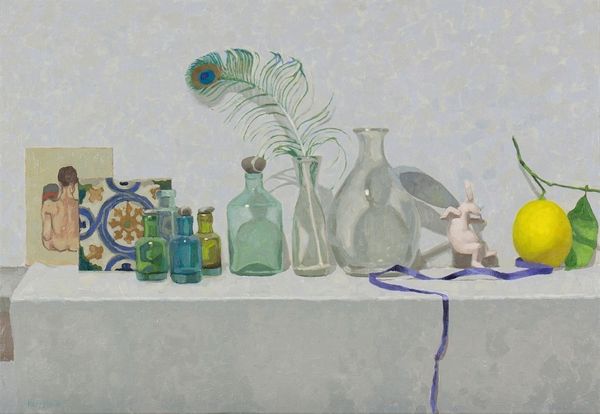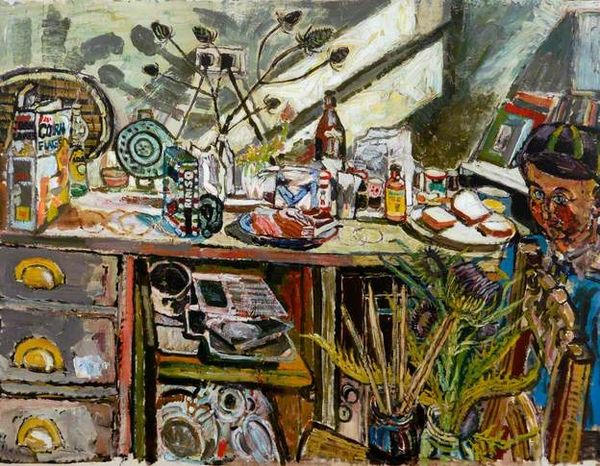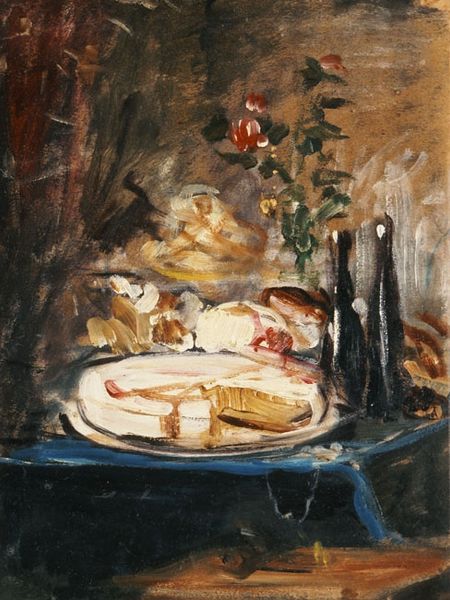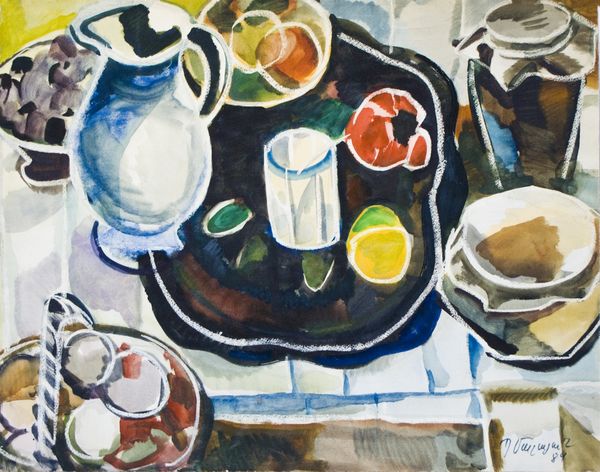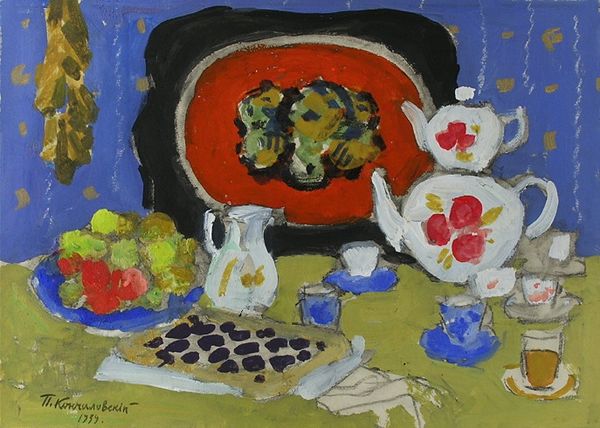
painting, oil-paint, photography
#
food
#
baroque
#
dutch-golden-age
#
painting
#
oil-paint
#
photography
#
genre-painting
Copyright: Public domain
Pieter Claesz, in the Dutch Golden Age, used oil paints to give us this sumptuous "Still Life." Look closely, and you'll see how much the effect depends on the painter's mastery of material illusion. Glassware, pewter, various foodstuffs - each surface has its own reflective quality. This wasn’t just about showing off; it was about the Dutch Republic’s booming economy. This was a society that prided itself on trade, navigation, and commerce. Consider all the labor implied here. The mining and smelting of metals, glassblowing, and not to mention the work of cultivation and cooking. Claesz is depicting a world rich in consumables, arranged for our pleasure. The items are precious but ephemeral, which challenges our assumptions about value. So, when you look at this painting, remember that it's not just a picture of food, but a celebration of human enterprise and the artistry of making. In that sense, it invites us to appreciate the work behind all things.
Comments
No comments
Be the first to comment and join the conversation on the ultimate creative platform.
